Note: In this post I reflect on my own experience with body image distress during my eating disorder recovery journey which included necessary weight gain. I want to acknowledge that the severity of an eating disorder is not related to being at a low weight or with any body weight or shape at all, and that distress from weight gain and a changing body can happen for anyone, regardless of your objective or subjective size. I want to acknowledge that I do experience thin privilege (as well as other privileges) in this culture and that I do not and did not have to face oppression from our culture due to my recovered body’s size. I feel so much compassion for those who do, and dream and work for a culture where one's weight, size and health are viewed as neutral to who we are.
Eating disorder recovery may be one of the most courageous and transformative experiences you’ll ever go through.
Recovery requires working through so many intense fears and challenges, and body image fears and distress can feel like some of the most difficult.
Part of you may truly want to give up your food rules and the constant thoughts and anxiety about food and your body. However, fears of how your body will change and of how you will feel when it does might feel like a huge barrier to making the changes part of you wants to be able to make.
For me, the fear that I might never feel at peace in my body was one of the biggest obstacles to being able to give up my eating disorder behaviours and fully recover. It felt like such a confusing and insurmountable obstacle.
If you feel the same, know that you are not alone. And also, know that this does not have to be a final stumbling block.
Each of the following helped me significantly and pulled me through many dark times when I believed recovery wasn't worth it or possible, and when I felt like daily behaviours surely must be better than feeling trapped in a body I could never feel at peace with.
I hope the following practices will bring you comfort, hope and renewed motivation to keep moving forwards.
1. Embrace Your Suffering
Your body as a phobia
It felt like what I can only imagine a phobic reaction feeling like.
For the first long while in my recovery every time I moved, every time I sat down in tight pants, every time I put on clothes or looked in a mirror or reflective window a feeling of panic would come over me, like I was having a phobic reaction to my changing, gaining body.
I had conditioned myself for so long to equate a certain body size with peace of mind and personal success and discipline that of course going against this by my own actions brought about the opposite feelings and thoughts automatically – panic, disgust, shame and fear. And for my anxious perfectionistic mind, this brought about a sense of panic that felt like a phobic reaction to my changing body.

However, a new way of viewing my struggle helped me significantly in being able to tolerate and push through this fear and discomfort.
I started working on accepting that yes it was absolutely hard, painfully hard, but also courageous. AND that it would get better. And that yes, my pain was real, it was like having a phobic reaction to my body after everything I had programmed myself to think for so long.
This concept of accepting the pain and discomfort that must come with overcoming a phobia helped me to compare my body discomfort to other things that feel uncomfortable and foreign at first, and then become normal to the brain over time: losing a tooth, having something new against your skin, your hand getting used to cold water.
It helped to remind myself that my brain just needed time to catch up to my body, and that my discomfort with my body just meant it was new, not that it was inherently wrong. The pain and discomfort were normal, AND would pass. My struggles were indeed courageous because of how hard they were. A phobia was no small thing to overcome.
The power of “Yes”
Saying “Yes” became an invaluable part of my recovery toolbox, despite how simple it seemed.
I learned this acceptance practice from Tara Brach’s book True Refuge.
Whenever I noticed thoughts that were in resistance to my current circumstances or to my body, I would simply repeat to myself slowly, “Yes”, several times in my head. It was amazing how my body would relax and soften and the distress from my thoughts would lessen.
Notice how your body feels as you say it to yourself. Do you feel your body soften? Do you feel your mind quiet, even just a bit?
Crying for healing
Letting myself cry became a transformative and healing practice for me. It acted as a powerful release when I felt overwhelmed by my changing body and fears that it would never get easier or feel worth it.
I would simply let myself cry, and soothe myself as best I could with self-compassionate thoughts and inner dialogues inspired by Kristin Neff’s wonderful book, Self-Compassion.
For example, with thoughts like, "It's okay, suffering is a part of life, and connects you to all of humanity. What you're doing is so brave. I'm so sorry you're in so much pain, but it's a beautiful, transformative thing. Let yourself feel it, you're doing such powerful work."
After, I would almost always feel more clear-headed and brave about the magnitude of the work I was doing. This made it so much easier to continue onwards and to not give up, even when it felt so painfully hard.
2. Start The Gradual Process Of Unlearning
Beginning to question why I thought a thin, toned body was so beautiful and worth striving for in the first place was also a necessary practice.
Automatically seeing any body fat as a failure that needed to be fixed had become so ingrained for me. However, beginning to examine this belief helped me greatly in being able to lessen the automatic fearful thoughts that would pop up when I examined my changing body.
I started thinking about how unnatural it seemed that society viewed female bodies as beautiful when they were too thin or had too little body fat to bear children….surely this must be a learned and not an inherent phenomena or we would never have survived as a species.
So if it was a conditioned preference, it could also then be unconditioned.

The power of new images and information
Looking at paintings and images of women from other eras such as the Renaissance, or images and sculptures of the Sacred Feminine and goddesses, which resembled anything but current mainstream models, helped me a lot.
I started seeking out images of larger models, larger famous women, and recovered individuals to look at as often as I could. And I realized that I thought they looked beautiful, so with time and exposure surely my brain could begin to see my own body the same way.
I stopped looking at magazines and social media that fed into the mainstream ideal of beauty, femininity and fitness, and this helped my unlearning a lot.
Eventually, I did start viewing my own body fat or lack of ‘toned-ness’ as much more normal, feminine, and eventually even beautiful.
Some wonderful social media accounts and blogs to follow, plus books to read on body positivity and fat acceptance are:
Instagram:
- @bodyposipanda
- @virgietovar
- @recoveryeverydamnday
- @body_peace_liberation
- @thebodyisnotanapology
- @joseesovinskyrd
- @jennifer_rollin
- @themilitantbaker
*For even more Instagram account ideas, visit my Resource Page as well as the extremely extensive list put together by The Militant Baker aka Jes Baker which can be found here.
Facebook:
Blogs:
- Dare to Not Diet
- Dances with Fat
- Virgie Tovar
- Beauty Redefined
- Be Your Own Beloved
- Body Image Movement
Books:
- Fearing the Black Body by Sabrina Strings
- More Than a Body by Lexie Kite and Lindsay Kite
- When Women Stop Hating Their Bodies by Jane Hirschmann and Carol Munter
- You Have the Right to Remain Fat by Virgie Tovar
- Shrill by Lindy West
- Dietland by Sarai Walker
- Shapeville by Andy Mills and Becky Osborn
I also began listening to podcasts and reading books about the Health At Every Size® movement and Intuitive Eating, and found this extremely empowering and healing.
These approaches gave me new concepts and information to help me counter the mainstream messages about smaller bodies, less body fat, and clean eating equalling admirable personal responsibility.
They also introduced me to a world of men and women who felt good about themselves and their bodies despite not fitting society’s ideal, and this was so refreshing and encouraging for me. If they could do it, often with lots of hard work and struggle to get there, then surely so could I.
Some wonderful books and podcasts for learning about and getting inspired by the Health At Every Size® and Intuitive Eating approaches are:
Books:
- Body Respect by Linda Bacon, PhD and Lucy Aphramor, PhD, RD
- Body of Truth by Harriet Brown
- Body Kindness by Rebecca Scritchfield, RDN
- Intuitive Eating by Evelyn Tribole MS, RD and Elyse Resch MS, RD, FADA
- Intuitive Eating Workbook by Evelyn Tribole MS, RD and Elyse Resch MS, RD, FADA
Podcasts:
- Food Psych Podcast with Christy Harrison, MPH, RD
- The Body Kindness Podcast with Rebecca Scritchfield, RD
- Fearless Rebelle Radio with Summer Innanen
- Dietitians Unplugged Podcast with Aaron Flores, RDN and Glenys Oyston, RDN
- Love, Food Podcast with Julie Duffy Dillon, RD
- Life. Unrestricted Podcast with Meret Boxler
- Nutrition Matters Podcast with Paige Smathers, RDN, CD
*For even more resources on body positivity, fat acceptance, Health At Every Size®, Intuitive Eating and more, Meredith Noble of Made on a Generous Plan has a wonderful collection of resources which can be found here.
Learning to view your body with a Beginner's Mind
The following is a practice I learned about after my own recovery journey but which I know would have helped me so much, and which I teach to clients now.
This practice is based on the Buddhist principle of Beginner's Mind, and is from the book 8 Keys to Recovery from an Eating Disorder by Carolyn Costin and Gwen Schubert Grabb. In this book, Beginner's Mind is described in this way:
"Using a beginner’s mind means learning to rid yourself of preconceived notions and see things in a new, fresh way.... you are paying attention in a new way and making the ordinary sacred. If you have ever watched the awe and delight of a child discovering ice cream or sand for the first time, you have witnessed beginner’s mind. We hope the following examples and assignments will help bring this concept to life."
The assignment I love using to bring this concept to life as it relates to helping with body image distress is the following, from the 8 Keys book:
Part 1: Describing a Flower
"For this assignment you need your journal and a flower. Pretend you are from another planet and you are asked to describe your flower to the people back home so they will know what a flower on earth is like. Describe color, sight, smell, touch, and anything else you sense. You can use analogies or metaphors."
"After you have written about your flower, read what you wrote to yourself and just take it in. For a moment imagine a world where flowers compared themselves to each other, because one had a fatter stem, or larger petals. Remember comparing our bodies is a learned behavior, but we can also unlearn it if we work really hard."
Part 2: Describing Your Body
"As this assignment might be more challenging, we encourage you to take time and give it your full attention. You are once again a being from another planet inhabiting a human body, or your “earth suit,” for your time on Earth. Just as you did for the flower, write a description of the human body using your body as the model. Write about what the body looks like, the many parts and how they function, what purpose the body serves, and how it works or moves. If you find yourself writing anything derogatory, stop and write that part again. Just like when you wrote about the flower, use detailed, objective descriptions, not judgments, when describing your body."
"Here is an excerpt from a client’s description: My body is a vehicle for my soul, my spirit, my energy. I have four appendages, which carry me through life. The two lowest, the legs, support me, ground me, and connect me to the earth. They enable me to run, jump, walk, they are strong, and they are curvaceous and feminine. My torso, the core of my body, holds messages of love, connection, creativity, and spunk. From my torso extends the two other appendages, my arms. My arms give and take, they have five-fingered hands at the end, which grasp, touch, caress, feel, and help. My arms are strong, they are connected to my torso by my shoulders, also durable, but they have the tendency to tighten when I experience emotional fluctuations. The other extremely feminine parts of my body are my breasts. They give life-sustaining nourishment to my offspring.”
"After you have written about your body, read over your description and perhaps share it with someone else. As you reflect on this experience, consider these questions: What was it like to describe your body without any negative words? How did you feel before you began writing and how do you feel after reading over what you wrote? What is it like to describe your body in terms of all that it does for you from a beginner’s mind, instead of focusing on its appearance and size, comparing it to others, and pinpointing all the things you dislike?"
3. Don't Just Tell Yourself, But Experience, How You Are So Much More
It can be so hard to accept perceived imperfections in our bodies when we feel like they represent so much of who we are.
Yes, they are the first thing people might notice about us, and people might judge us for them. Therefore for me, the biggest healing approach was to do things that helped me connect with the part of me that was so much more than my body.
I refer to this part of myself as my Soul, my heart, my inner wise self, or my higher self or healthy self, and you might refer to it as so many other things. But it’s the part of you that people would miss if you passed away, and in a deeper way than your personality. It’s the essence of who you are, whatever that might mean for you.

It’s what you love about those close to you even when they've gained weight, and even when they're in a bad mood.
Try to do as many things throughout your day as you can to connect with that part of you.
It might be meditating, even just for one minute. It might be a quiet walk in nature, appreciating a sunrise or sunset, or a feeling you get doing yoga or looking into a baby’s eyes.
It's a feeling of connection to something larger than you, from a place deeper within you. A place that is lovable and potent regardless of your weight, shape or beauty.
Over the years of your eating disorder being the main voice you listen to and give power to in your mind, you may have lost awareness of this deeper part of you. However, it has just gotten buried and weakened over time, it is never truly gone.
Through the recovery process, the work will be to reawaken and strengthen it. It is this part of you that will heal and reintegrate your eating disorder self, and ultimately heal your body image.
Think about a common eating disorder thought you have, as if a close friend or relative was saying it. Then, think about what you would say back to them. Likely, it is very different from what you say to yourself. This is your Healthy Self, that is often so much more available for others than for ourselves.
Another exercise is to think if you would recommend any of your eating disorder rules or behaviours to someone else you care about.
It's okay if your healthy self only feels available to others and not to you at first. With time and practice in connecting to it, listening to it, and acting from it, it will begin to feel more and more available for you.
I discuss this concept further in my post, The Power of Inner Dialogues During Eating Disorder Recovery.
This healthy self is the part of you that during recovery you are going to connect with more and more, and by doing so strengthen it. Then, it can provide all of the things your eating disorder has been providing for you, gradually putting your eating disorder out of a job.
Gradually, you will begin to feel connected to this part of you that is so much more than your body. Gradually, how you live your life and connect with yourself and others, with your body as your vehicle, will mean so much more than how your vehicle itself looks.
In her book 8 Keys to Recovery from an Eating Disorder, Carolyn Costin refers to these moments as Soul Moments. Noting them down acknowledges, and works towards strengthening, that healthy self inside of you.
This is a wonderful TEDx talk that discusses body image resilience and the importance of not objectifying ourselves, which is something that can feel so normal to do over time. It ties in really well with the concept of experiencing ourselves as more than our bodies.
4. Talk Back With Wisdom And Compassion
Over time, I began to feel less and less that my eating disorder was just ‘me’, comprising all of my thoughts and beliefs. I was eventually able to start noticing, and finally listening to and then acting from, my inner, wise, higher self.
Once I became aware of this inner part of me who did not hold my eating disorder self’s convictions, I was able to begin calling on it to talk back to my eating disorder’s convincing thoughts and messages.
This was one of the most powerful practices in my recovery, and is something I continue to practice today when I am confronted with my inner critic or perfectionism.
Sometimes I would read quotes by others, sometimes I would repeat my own made-up mantras to myself over and over, and sometimes it would be long internal messages or journaling from my inner Soul self that would talk back in a gentle, compassionate but strong way to my eating disorder’s fear-based convictions.
Some of my favourite quotes were by Rumi, a beautiful mystical poet from the 13th century, which made me feel in touch with so much more in the universe than my own worries. His Book of Love, and searches for “Rumi quotes” in google images or Pinterest, were a wonderful source of comfort and motivation for me.
Some of my own thoughts which helped me feel stronger and not completely taken in by my eating disorder fears were:
- “I know this is so hard right now, but your brain really can change. This won’t feel unnatural and difficult forever. And it will be so worth it. What you are gaining in your life and in yourself is so much more than what you’re learning to give up.”
- Thoughts to reframe things when I was feeling beaten down by the recovery process: for example, how it was anything but undisciplined or lazy to let myself eat less ‘pure’ foods and gain weight, especially in this culture and with my conditioned brain. How powerful a stance it was in this culture to let my body find its natural weight and let myself eat naturally and with joy, knowing it might mean I didn’t meet society’s ideal for beauty and fitness. What a brave, self-caring stance to take! And what courage and discipline it would require.
- I would focus on all the ways I was getting stronger internally by the recovery process, and acknowledge how I was having to redefine the way I felt special and good about myself. I would acknowledge how powerful it was to have to deepen my relationship with myself so that external things like my body, diet, grades, career success etc. were no longer worth making myself miserable over since I would no longer rely on them to make myself feel good about myself.
5. Develop New Ways To Find Mental And Inner Peace
It might feel impossible to imagine being able to recover when your eating disorder self is still so strong, and when recovery just seems like changing your eating and body but still being stuck with the same brain that will never give you peace about your eating or your body.

What helped me to keep moving forwards was thinking about recovery as strengthening that different part of myself, my inner wise healthy soul self, which wouldn’t need to accept my body in order to accept me.
This strengthening of my healthy, soul self became as much of a focus for me as what behaviours and thoughts I was working to get rid of.
At first, I couldn’t imagine being free from my behaviours and also being free from hating my body and therefore myself, because all I knew was how to think from my eating disorder-conditioned mind.
However, when I started having faith that my brain and relationship with myself could change, that I could strengthen my healthy self and relate to myself from there, that I didn’t need my eating disorder to accept my new body because it would no longer be conditioning my mind in the future, I was able to find the faith in the process to keep going, even as my eating disorder mind kicked and screamed.
And month after month of strengthening this healthy Soul self with the practices listed here, meditating, reading books on spirituality and self-compassion, and talking back to my eating disorder self and then acting against its dictates bit by bit, this inner wise part of me did get stronger and stronger.
This was the part of me that could handle negative body image thoughts without feeling like who I was was falling apart.
And gradually, this part of me became so dominant inside of me that I did feel at peace in my natural body……a body that my eating disorder never would have been able to accept had it still been the dominant influence in my mind.
Apart from the books that helped me and that I mention here, some other books that I've heard of helping others on this journey of connecting with and strengthening the inner self, and finding a sense of spirituality that resonates, are:
- The Re-Enchantment of Everyday Life by Thomas Moore
- Care of the Soul by Thomas Moore
- A Path with Heart by Jack Kornfield
- Seat of the Soul by Gary Zukof
- The Power of Now by Eckhart Tolle
- The Untethered Soul by Michael Singer
- Waking Up by Sam Harris
6. “Instead Of Cursing The Darkness, Bring In The Light”
This is a beautiful concept discussed by eating disorder therapist Carolyn Costin in her books 8 Keys to Recovery from an Eating Disorder book and workbook. I'm not sure who the original author of the quote is as it has been shared so often.
Even though I didn’t know of Carolyn’s work while I was recovering, looking back I realize that it was this approach that helped me the most in healing my body image during my eating disorder recovery.
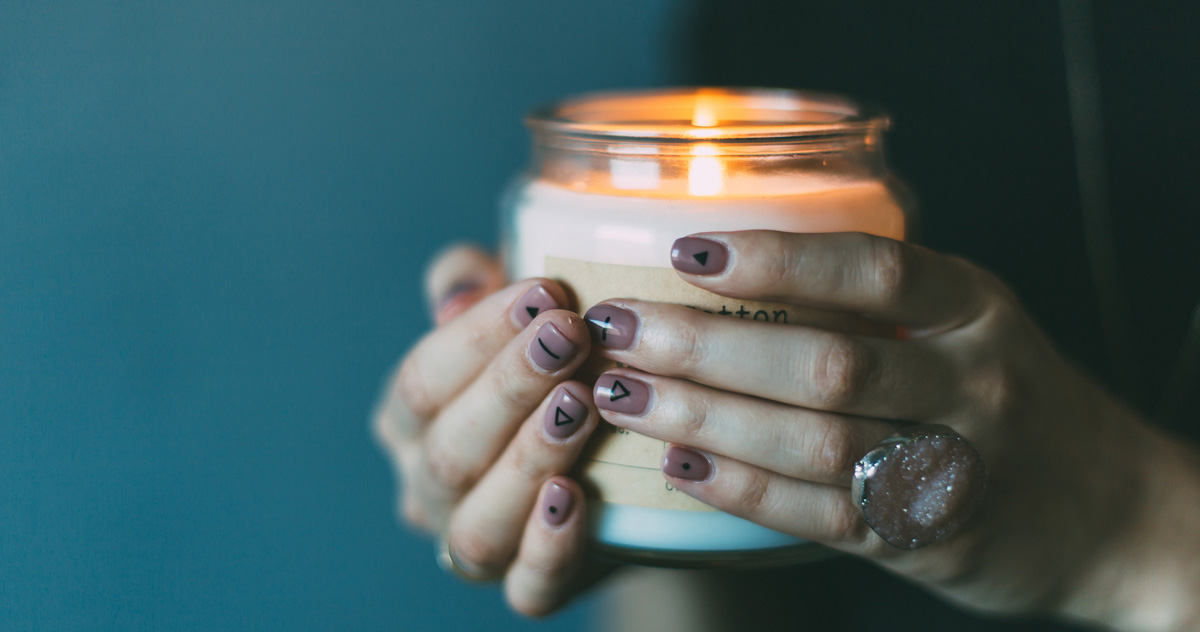
Rather than trying to convince my eating disorder brain to accept my body, which was a daunting order, I focused on strengthening my inner wise, Soul Self, knowing that it was this side of me that could love me for so much more than my body.
I believe in this approach so much when it comes to body image.
When I was trying to heal my body image during treatment by convincing myself that I wasn’t as large as my eating disorder self might be saying, the thoughts always came to me, “What if I was in a larger body? What if I ever go over my goal weight? What about for someone who is fat? Am I telling myself that these obsessions and behaviours are only harmful for me because I’m thin or noticeably underweight?” This didn’t feel like the deep healing I knew I needed to allow myself to have a natural relationship with food.
Rather, developing a deeper relationship with myself and the world and strengthening my inner Soul self in ways that resonated with me felt so much more meaningful and effective for me.
I believed in this approach because I knew it could work for people of any body size, as well as for me if I went above the goal weight I was told to strive for – but of course, didn’t need to go over according to my treatment team.
I didn’t want this approach to healing….to allow myself to be free from behaviours based on proving to myself how thin I actually was. I wanted to not care anymore, to be able to love myself no matter how large or how against society’s ideals I was.
This is the struggle that so many individuals who do not fit the stereotypical thinness associated with eating disorders often do face in eating disorder recovery, and I’m so grateful that others are addressing this weight stigma concern in the eating disorder field and are working to bring about change.
Final Thoughts
Anticipating the changes your body might have to go through during eating disorder recovery can feel daunting or even paralyzing.
When you've identified with a certain way of feeling good about yourself and coping with life for so long, it can feel like a Herculean task to consider being able to feel good about yourself and handle life without these. That makes so much sense.
I believe the key to being able to challenge your eating disorder behaviours and to strive for full recovery is to keep reminding yourself that your brain really can change. How you think about your recovered body now can fundamentally change. Your brain became like this over time, and so with time and lots of patience, conscious repetition of new thoughts and new, scary behaviours it can also transform to be at peace with whatever your recovered body might be.
Full recovery just often (usually) takes so much longer than we think it will, and we often judge it in its intermediate stages, thinking they're the best it will ever get.
I know it can feel impossible to believe sometimes, that it really will get better, and this is where faith comes in.
We do so many courageous things in life that require some faith that the outcome will be positive and worth it, with no solid proof: saying our wedding vows, deciding to have children, starting a new career with an incredibly steep and not guaranteed learning curve.
Trust that when it comes to your body, your faith that you can have it all - a life free from eating disorder behaviours and thoughts, AND peace and joy in your new body - is not misplaced.
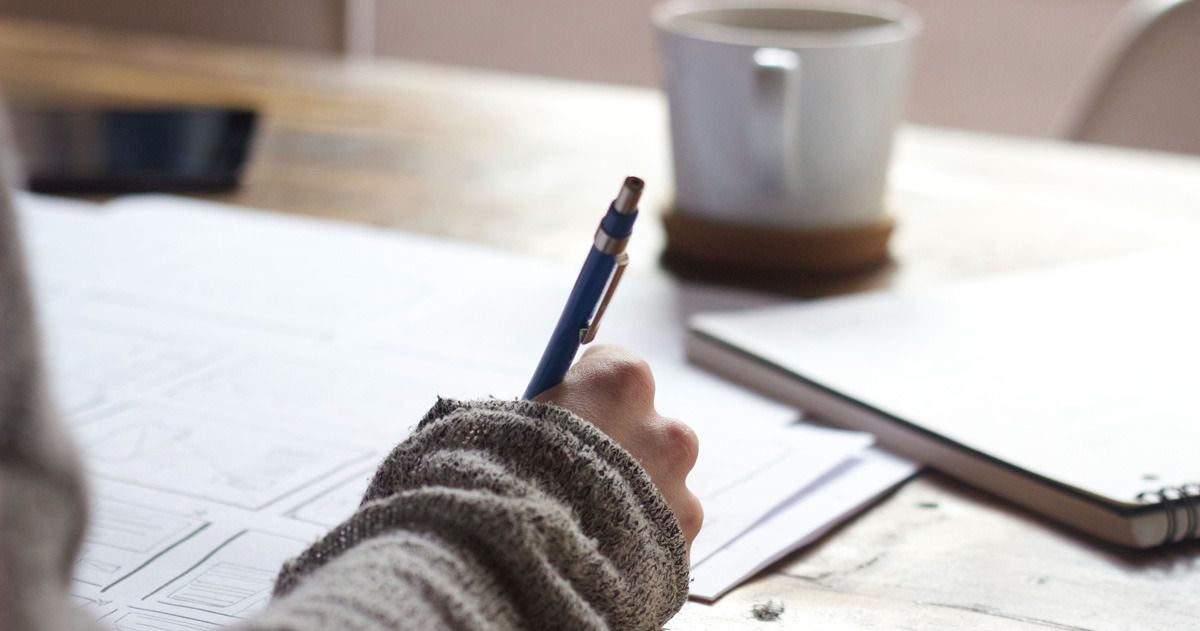
Journaling Prompts:
- Write out all the fears you can think of regarding what you're afraid you'll have to confront if you challenge your eating disorder and recover fully. For example, “With recovery, I may be able to get free from my behaviours but is it worth it if I always feel miserable in my body?”
- Based on any new ideas or inspiration you got from this post, or anywhere else, try writing gentle, compassionate but strong arguments back to each of these thoughts. If it feels too difficult to address them to yourself, write as if you were talking to a good friend who was having these fears and doubts. What would you say to them to encourage them and show belief in them?
- In a few hours or days, come back and write a response from the side of you that still feels afraid to make these changes. Let your eating disorder side express all of its fears and hesitations and arguments for why it's not worth it or is afraid it will never work, or might work for others but not for you.
- Lastly, respond back, again gently but strongly like you would to a good friend, with all the reasons why this doesn't have to be true for you. If it's too hard to think of these responses for yourself, again write as if you were saying them to a good friend who is expressing these fears and doubts to you.
- This journaling process is called 'Dialoguing with Your Eating Disorder Self and Your Healthy Self' and is described beautifully in the book 8 Keys to Recovery from an Eating Disorder by Carolyn Costin and Gwen Schubert Grabb. I cannot recommend their book and workbook highly enough.
With time, your brain really can change, and what feels impossible now no longer will. Rather, it will become your new normal.
Luckily this is how the brain works, and it's a wondrous thing. It just takes time, a lot of hard work, patience and some faith.
To your life of fullness, self-love, and truly having it all,
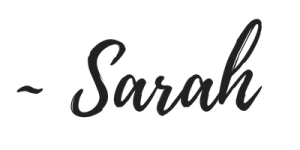
Support For Your Journey
If you feel you could use more support on your eating disorder recovery journey I would love to connect with you. Contact me to book a free video discovery call so that we can explore if working together would be a good fit. I would love to hear from you.



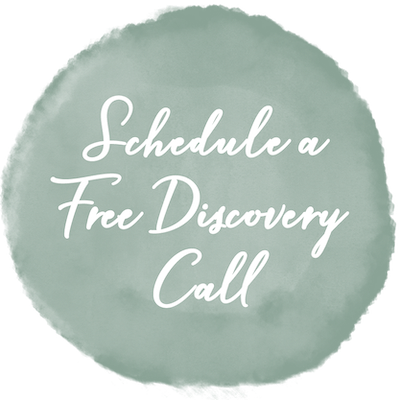





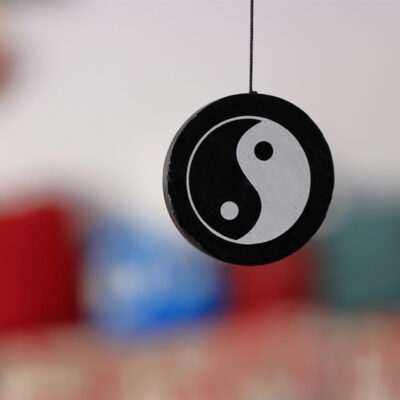


Steph
Wow, so much of what you have written here resonates with me on such a deep personal level. This really has given me much to think about, consider and explore. Thank you so much.